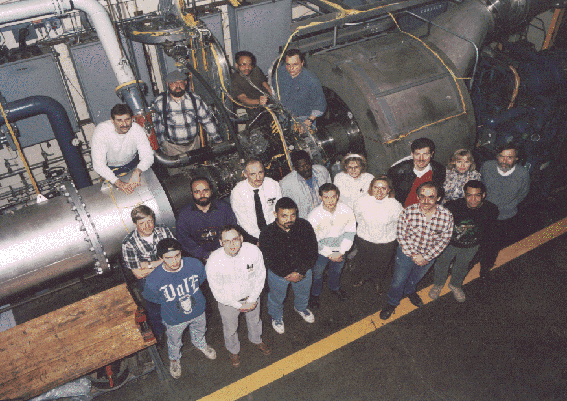 |
|||||
| Home | Research | For Teachers | HISTORY Level 1 Level 2 Level 3 |
PRINCIPLES Level 1 Level 2 Level 3 |
CAREER Level 1 Level 2 Level 3 |
| Gallery | Hot Links | What's New! | |||
| Web Administration and Tools | |||||
 |
|||||
| Home | Research | For Teachers | HISTORY Level 1 Level 2 Level 3 |
PRINCIPLES Level 1 Level 2 Level 3 |
CAREER Level 1 Level 2 Level 3 |
| Gallery | Hot Links | What's New! | |||
| Web Administration and Tools | |||||
![]()
This in-house program provides a vehicle for investigating system-related phenomena and for evaluating the application of advanced concepts to turboshaft engine systems. Program goals are aligned to develop a physical understanding of system dynamics problems and/or interactions among engine components. Typical investigations include implementing advanced controls and studying dynamic responses; documenting the behavior of ceramic turbine shrouds; demonstrating a contingency power concept; and determining methods of quantifying the effects of engine inlet temperature distortion, both steady-state and transient.
The unique capability to quantify the effects of inlet temperature distortion was a fallout of earlier NASA programs. The concept, which provides for a controlled rate of temperature increase in sectors of the inlet, was refined and adapted to the Army's RAH-66 Comanche powerplant, the T800 engine. Distortion investigations, conducted jointly with the engine manufacturer, provided data needed early in the engine development to define stability margins. This testing capability was also available for meeting engine qualification requirements. Other NASA Lewis facilities were used to determine the overall performance of the T800 engine at altitude conditions. Separate from these efforts, components and concepts demonstrated in the STER Program have been handed off to the engine industry and incorporated in advanced Army engines.
POC: George Bobula

Engine Components Research Laboratory
![]()
Send all comments to ![]() aeromaster@eng.fiu.edu
aeromaster@eng.fiu.edu
© 1995-98 ALLSTAR Network. All rights reserved worldwide.
Updated: February 17, 1999